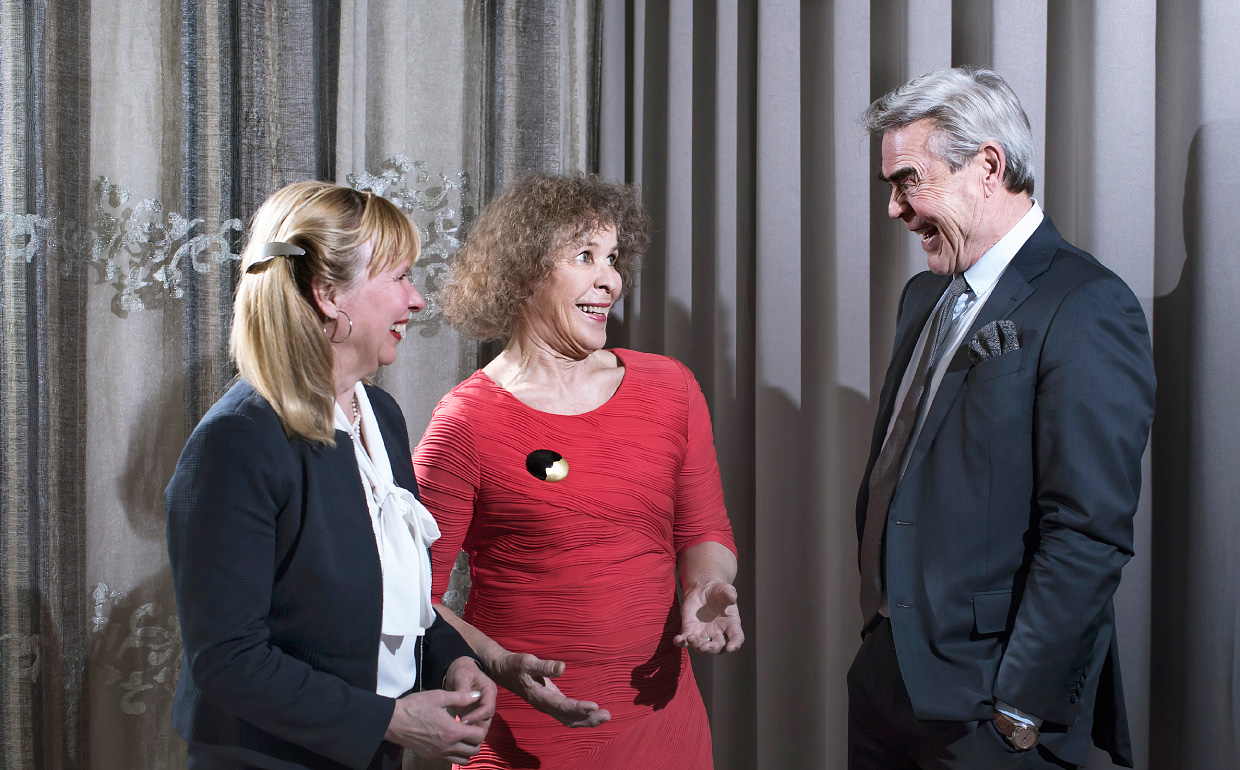Foundations are essential for research
The foundation established by Emil Aaltonen, a Finnish industrialist, in 1937 gives out more than six million euros in grants each year for research in different fields. The nine professor members of the foundation’s board familiarise themselves with the applications of which about ten per cent are approved (in 2019, about 300). If necessary, outside expertise is used in the application assessment process.
In Finland, private foundations give out more than half a billion euros for research and culture each year. The total sum is boosted by the fact that non-profit foundations are entitled to tax relief.
Sirpa Jalkanen, Chair of the Board of the Emil Aaltonen Foundation and Tuula Tamminen, Deputy Chair of the Board, emphasise that foundations are able to support research that they consider important.
“Innovative research might wither away without the input of foundations, which supplements the public funding provided for academic research," Tamminen explains.
 Sirpa Jalkanen, Chair of the Board of the Emil Aaltonen Foundation; Tuula Tamminen, Deputy Chair of the Board of the Emil Aaltonen Foundation; and Kari Mustakallio, Executive Director of the Emil Aaltonen Foundation.
Sirpa Jalkanen, Chair of the Board of the Emil Aaltonen Foundation; Tuula Tamminen, Deputy Chair of the Board of the Emil Aaltonen Foundation; and Kari Mustakallio, Executive Director of the Emil Aaltonen Foundation.PRH is responsible for the oversight of foundations
The status of foundations as independent legal persons was laid out in the 1930 Foundations Act. The act also contained provisions on the Register of Foundations, the maintenance of which was transferred from the Ministry of Justice to the PRH in 1995.
There are about 2,700 foundations in the register and with the annual reports submitted by them, the PRH can ensure that the foundations comply with the law and their own rules. The new Foundations Act, which entered into force in December 2015, contains stricter openness requirements and the foundations had to notify the PRH of the required changes in their rules by December 2018.
“We have always observed these same principles, which means that we only had to make minor changes as a result of the new act. We have now more detailed provisions on related parties," says Kari Mustakallio, Executive Director of the Emil Aaltonen Foundation and the great-grandson of the founder.
Aaltonen appreciated science and arts
How did a poor young boy from the Tampere region, who left home at the age of 13 to learn the shoemaker’s trade, became a patron of Finnish arts and science?
The shoemaker’s workshop founded by Aaltonen when he was twenty years old grew into a shoe factory and later he was involved in the establishment of a plastic products factory (Sarvis) and the operation of a heavy engineering workshop (Lokomo). In 1917, he bought a large farm, which supplied the employees of his factories and other Finnish people with food.
Undeterred by setbacks, Aaltonen continued to develop his business ideas and collected art for decades.
Each foundation is guided by the will of its founder. Emil Aaltonen wanted to support research carried out in Finnish. Emil Aaltonen Foundation and the PRH have jointly drawn up an interpretation of this clause and the foundation’s Board now requires that all grant applicants must be fluent in Finnish.
The companies established by Aaltonen have closed down or merged with other businesses but the foundation that he created with his wealth continues the industrialist’s work in support of sciences.
The Emil Aaltonen Foundation
Emil Aaltonen (1869-1949) wanted to use the tangible results of his work for the good of the nation in the field of culture and sciences. He supported culture and arts and the foundation, established in 1937, provides support for science and research in a broad range of different areas.
The Emil Aaltonen Foundation has its office in the Pyynikinlinna building in Tampere. Emil Aaltonen bought the building as his home in 1932. It is now a museum where exhibitions and other events are held.

Finnish text: Päivi Helander
Pictures: The Emil Aaltonen Foundation, Nina Kaverinen

